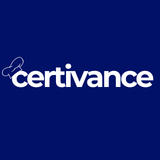National Milk Day

Celebrated: January 11
Pour One Out for the Original Superfood
Milk has nourished civilizations for thousands of years, but January 11 marks a modern milestone: the first time milk was delivered in sterilized glass bottles in the U.S. back in 1878. Before then, storing and transporting milk was a messy and often unsanitary business, with contamination and spoilage posing serious health risks.
The invention of bottled milk—later paired with pasteurization and refrigeration—revolutionized public health and food access. It transformed milk into a reliable, safe staple food that remains deeply embedded in our diets today.
Did You Know?
- Before modern sanitation, milk was often sold from open barrels or ladled from carts—yikes.
- Pasteurization, developed by Louis Pasteur in the 1860s, didn’t become standard in the U.S. until the 1900s.
- The first glass bottles were sealed with waxed paper, later replaced by foil and plastic caps.
- Milk contains nine essential nutrients, including calcium, protein, potassium, and vitamin B12.
- Scientists have identified milk as one of a few foods that, in theory, could sustain life on its own.
📅 Note: Don’t confuse National Milk Day (Jan 11) with World Milk Day (June 1)—that’s a global UN-recognized event launched by the FAO.
Ways to Celebrate National Milk Day
- Drink a Cold Glass: Reconnect with milk in its purest form—straight from the fridge.
- Milk & Cookies Night: Host a nostalgic treat tasting.
- Try Global Varieties: Sample plant-based milks or international milk-based drinks like lassi, horchata, or kefir.
- Visit a Local Dairy: Support your local producers and learn about modern dairy safety practices.
Milk Safety Tips from Certivance
Whether in a school cafeteria, creamery, or retail cooler, milk safety is critical:
- Keep It Cold: Milk must be stored at or below 40°F. Even short temperature abuse can cause spoilage or pathogen growth.
- Sanitize Equipment: Milking machines, pasteurizers, and bottling lines must be thoroughly cleaned and regularly inspected.
- Check Labels: Look for “pasteurized” and review best-by dates carefully—raw milk carries elevated risk of pathogens like Listeria and E. coli.
- Watch for Swelling: Bulging cartons or foul smells mean spoilage—toss it!
Certivance partners with dairy farms, bottling facilities, and foodservice providers to ensure compliance with FDA regulations, HACCP plans, and clean-label expectations.
Raise Your Glass — Safely
Milk may be one of the most natural foods around, but its production is anything but simple. From the farm to your fridge, Certivance ensures every drop meets the highest food safety standards. Let’s talk about how we can support your dairy safety systems.





